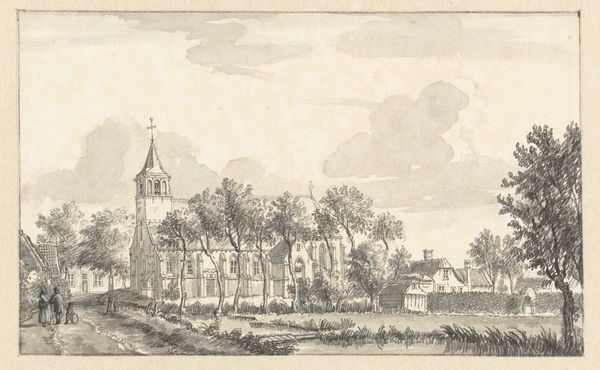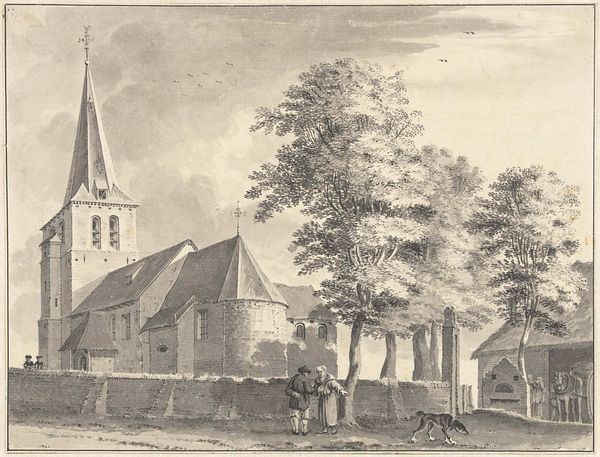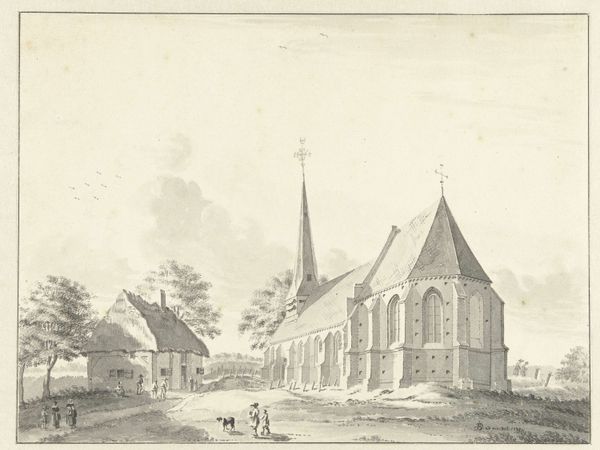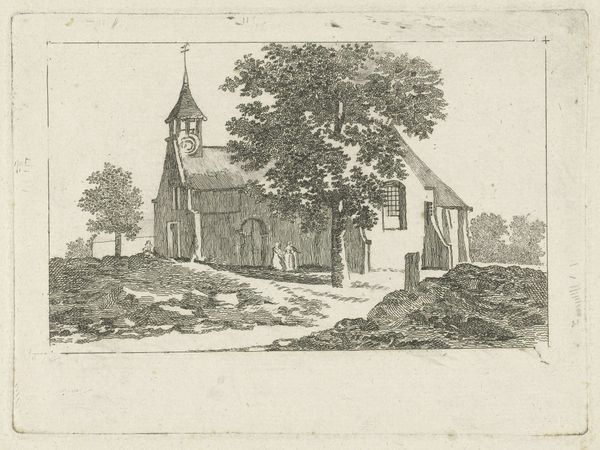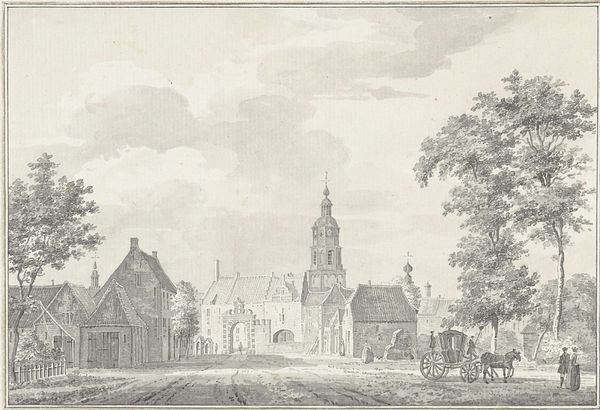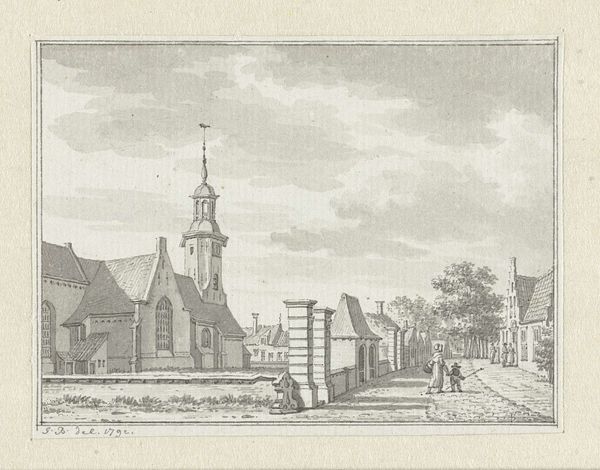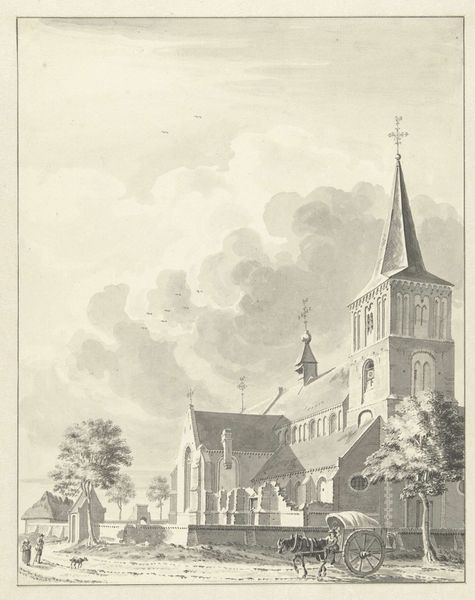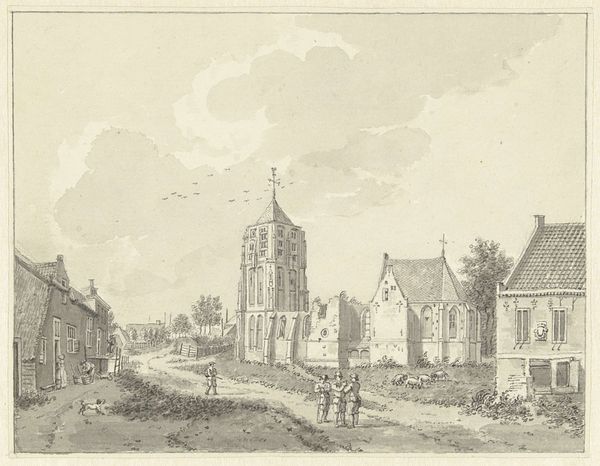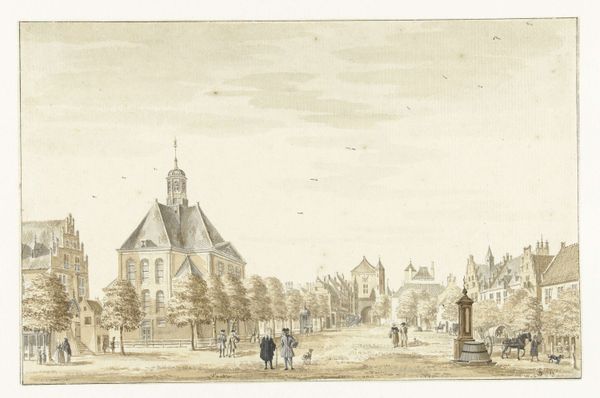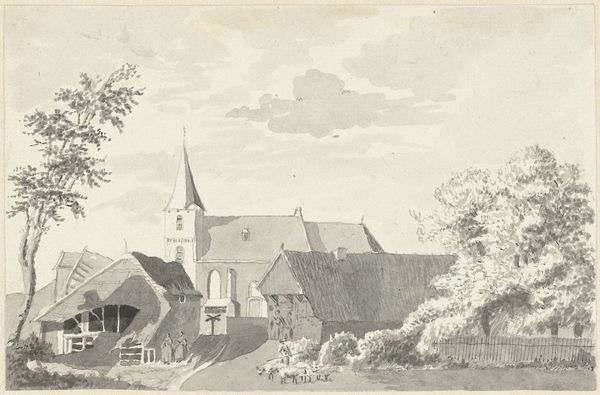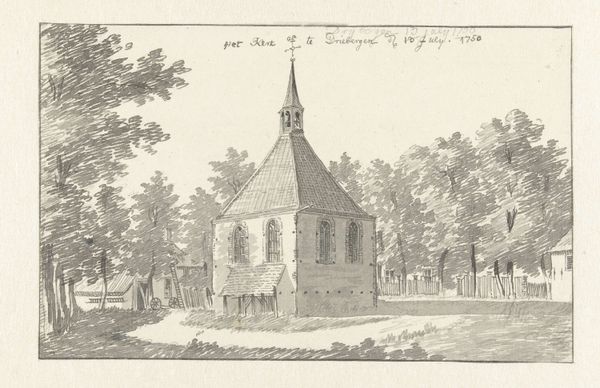
drawing, paper, ink
#
drawing
#
baroque
#
landscape
#
paper
#
ink
#
cityscape
#
genre-painting
Dimensions: height 71 mm, width 98 mm
Copyright: Rijks Museum: Open Domain
Curator: We’re looking at an 18th-century ink and paper drawing entitled "Dorpskerk van Weurt," attributed to W.M. Obreen. The scene captures a village church amidst a sparse landscape. Editor: The somber gray ink gives the drawing a quiet, almost melancholy feel. The weight of time feels palpable, both in the style and the subject. Curator: Absolutely. Churches often act as enduring symbols of community and faith. Here, the steeple pierces the sky, a clear signifier. Its presence probably offers more than a mere structural point of reference. Editor: While I appreciate the spiritual connotations, I am intrigued by the actual materiality of this village. I'm considering how a humble construction like this reflects available materials and the labor required. The building has a rough simplicity, clearly dictated by what was on hand, reflecting very directly how a whole social organism might subsist. Curator: Note that it also adheres, loosely, to baroque conventions. The perspective leads the eye towards the church; yet it is simple compared to the era’s extravagant flourishes often associated with ecclesiastic display. Do you think this is due to more regional, humbler tastes? Editor: That’s precisely it. Forget gilded excess, you have paper, ink and modest architecture. I can imagine that Obreen would need to gather these raw materials himself, or commission paper and ink making, adding layers of practical artistry and local support. The artist perhaps intimately connected with local trade? Curator: Possibly, and how intriguing that these common folk are congregating around the space; one could venture interpretations ranging from actual prayer or local socializing. A subtle depiction of social roles? Editor: More likely, these sorts of gatherings reflect village economy, and the slow accumulation of interactions defining this isolated world. Curator: Very different approaches. The work prompts reflections on faith, but also, crucially, reminds us of how much of art, then and now, roots itself firmly in material realities. Editor: Yes. Even depictions of the ethereal reveal earthly truths!
Comments
No comments
Be the first to comment and join the conversation on the ultimate creative platform.
